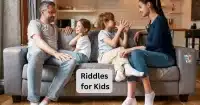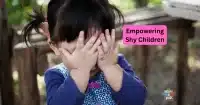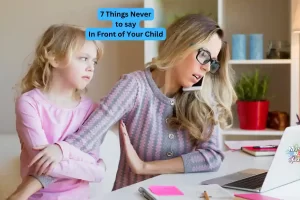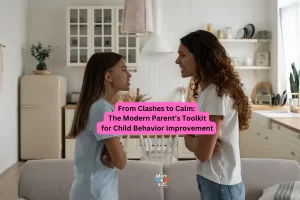When a child is young getting them to listen can be very challenging. This is when non-verbal communication and postive parenting can prove helpful. Dr. Caron Goode explores techniques that may help with young children while building a postive loving relationship
by Dr. Caron Goode
If your plan is for a year, plant rice.
If your plan is for a decade, plant trees.
If your plan is for a lifetime, educate children.
If your plan is for a decade, plant trees.
If your plan is for a lifetime, educate children.
– Confucius
Getting kids to listen is not very easy in the younger years, that is why we establish communication with younger children not only through words, but through the messages we convey in everyday interactions. Communication starts with a respectful relationship based upon the developmental messages a child must hear in order to hear you: you are safe, you are wanted, you are loved, you are innocent, you matter to us, you are taken care of………
In the earlier years, communication is connection established through face-to-face, eye-to eye, and empathic heart-to-heart contact. From infancy through the toddler years, you connect with your child best through eye contact, smiles, gentle touch, and empathy. When you connect, you’ll intuit your child’s receptivity and help shape her responses to you. For example, a sensitive child who startles easily may not respond well to a loud voice. Modulating a lower voice tone invites the child to connect. A curious child lost in his own world of zooming toy cars may not hear you speak loudly or softly. Rather, touch re-establishes eye contact, and then guiding the movement physically will help the child transition to the next activity or expectation.
I am often asked how [tag-tec]parents[/tag-tec] can connect to the loud and boisterous child. Honestly, the methods of connection are the same. Touch, face to face connection and empathy relate to establishing respectful communication with all children.
To these, add modeling and demonstration of expected behaviors to help a child structure her environment. Touch leads to modeling desired behavior, demonstrating for the impulse-challenged [tag-ice]child[/tag-ice] what you expect of him. The difference among children’s temperaments explores which contact they need most – eye-to-eye contact, touch, empathy, modeling, or demonstration.
So in the early years, we are modeling connection through touch, facial contact and [tag-self]empathy[/tag-self] paired with the words we expect our children to use. Conversation in these years has little do to with what parents have to say to their children as much as it helps children identify feelings, express their desires and needs, talk with friends and learn the social skills that are respectful.
Four-year-old Jason was the first son of a history professor who became a stay-at-home mom after a six-year stint at a local college. Jason enjoyed sitting with his mom and looking through her collection of coffee table books with beautiful photographs. As a parent coach, Shawna invited me to observe their interactions for an afternoon. The Mom’s coaching goal was to find ways to support her son’s developing intelligence.
They opened a nature book. When Jason saw horses, he spurted out “horsy” which seemed to be mom’s clue to tell him all about them. The professor couldn’t move out of her role. I watched as her son tried to turn the page, patted his mom’s arm for attention, and started turning a bright red in his frustration to get her attention.
I caught her eye and said, “Shawna, you are lecturing your four year old son. Look at him now, right in the eye.” As she did, Jason glared at her, not believing she was quiet. He turned the page and again stared her in the face, risking the connection to see if she would talk or not.
“Invite him to talk with you, Shawna.”
“Jason, show me your favorite horse.” He turned several more pages to a shiny blue-black steed, and told his Mom a horse story.
Shawna listened. Jason’s anger transformed to delight and the start of a new trust that he could converse with his mom.
Did you notice that Jason looked at his mom (eye-to-eye) and tapped her arm (touch to get attention)? Shawna and Jason had established rapport, but the respect wasn’t there because Shawna assumed she knew her son’s needs. Intuitively, she also knew something was lacking because she called upon a parent coach. The only aspect Shawna didn’t know to practice is the heart-to-heart or tuning into her son’s needs. Shawna could do this through observation, using her intuition, or asking Shawn a question.
When parents practice consistently the basic steps for respectful connection—eye to eye contact, touch, smiles and empathy—they establish a baseline of trust for communication. Children learn that they are valued.
Biography
Caron’s entrepreneurial fun takes place at the Academy for Coaching Parents International which provides training and certification for students to operate Parent Coaching businesses. As a mother and stepmother, Caron knows firsthand the importance of parenting skills and that nurturing children with joy, common sense, and connectedness enriches and benefits both parent and child. Her newest book is Help Kids Cope with Stress and Trauma. Her expertise has made her a frequent media expert and her work has appeared in Colorado Parent, Convergence, The Joyful Child, Energy, Black Family Digest, and Better Homes and Gardens. She and her husband Tom Goode, ND, live in Ft. Worth Texas.
EDUCATION
Post Doctoral Work: (1996-1998) Institute of Transpersonal Psychology; focus on Women’s Psychology and on Wellness
Doctorate of Education: (1979-1983) The George Washington University, My degree is in Counseling Psychology, with the major, Human Development and Leadership and a minor in Special Education.
Masters of Communication: (1972-73) Our Lady of the Lake University, San Antonio TX. Major was language and minor was learning disabilities.
Bachelor of Science: (1971) Oklahoma University of Liberal Arts, Major was Speech Therapy and Deaf Education.
EDUCATION
Post Doctoral Work: (1996-1998) Institute of Transpersonal Psychology; focus on Women’s Psychology and on Wellness
Doctorate of Education: (1979-1983) The George Washington University, My degree is in Counseling Psychology, with the major, Human Development and Leadership and a minor in Special Education.
Masters of Communication: (1972-73) Our Lady of the Lake University, San Antonio TX. Major was language and minor was learning disabilities.
Bachelor of Science: (1971) Oklahoma University of Liberal Arts, Major was Speech Therapy and Deaf Education.
No part of this article may be copied or reproduced in any form without the express permission of More4Kids Inc © 2006
|
A mother of 5 shows how avoid some of the stumbling blocks and pitfalls. Her eBook, Parenting Secrets will not only help you, but also your children who will be able to grow up with the kind of coaching and mentoring they need from you in order to blossom to their fullest potential. You will also grow into your fullest potential as the wonderful parent you are. Judge for yourself, visit Parenting Secrets for more information. |











Add Comment